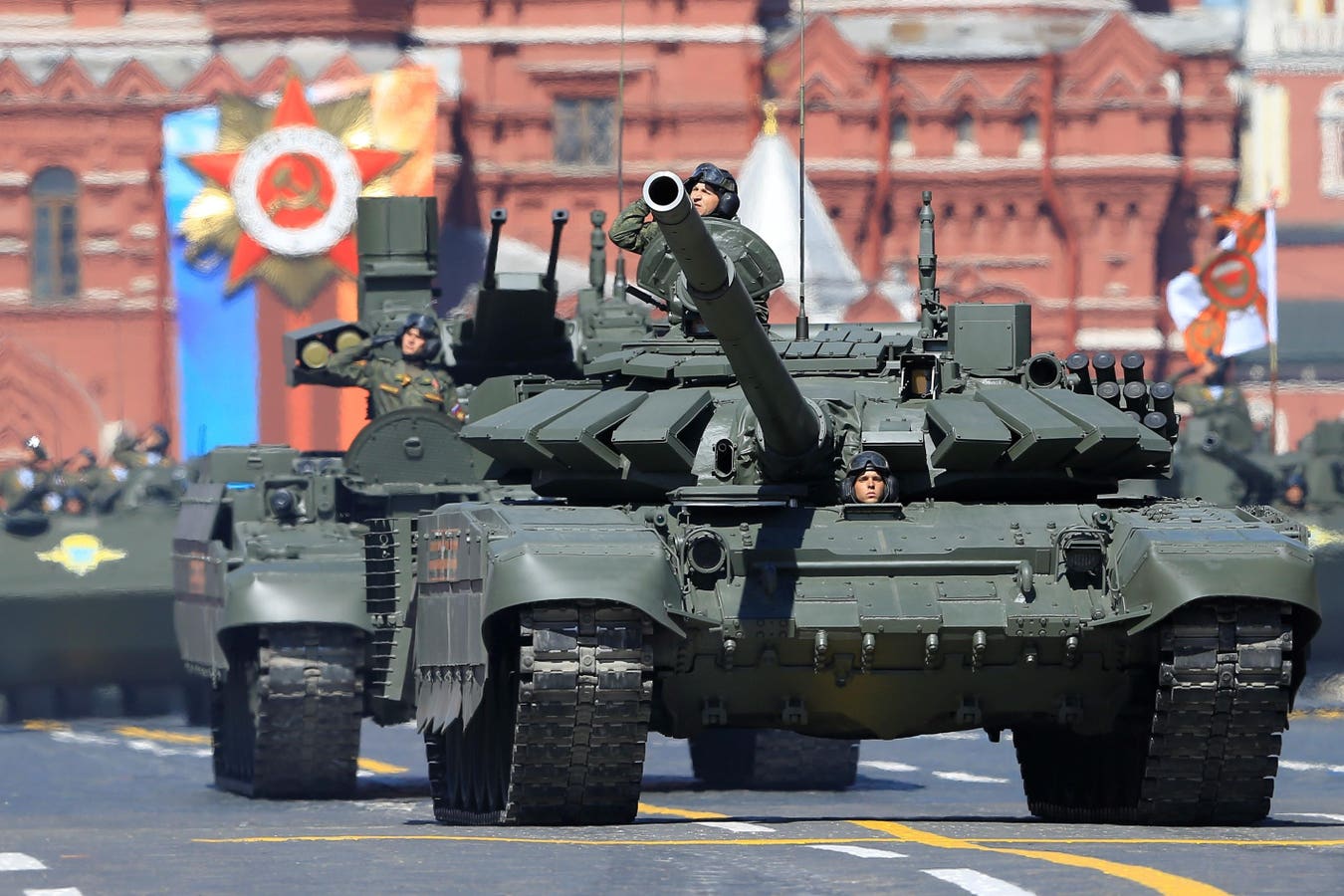Russia’s modern T-90 tanks are mainly AWOL in Ukraine, but the country has vast numbers of older tanks to fill the gaps. As confirmed vehicle losses meticulously compiled by Oryx and others show, of the almost 2,500 tanks lost, at least 1,267 – over half – are from the T-72 series. The modernized version of this tank, known as T-72B3, is a mainstay of the Russian armored force. Unfortunately it is a lemon, for reasons eloquently described in a Twitter/X thread rant by and OSINT analyst who goes by the handle Trost.
“When you need tanks urgently, like Russia, which loses tanks every day, many bad tanks are better than no tanks,” Trost told Forbes. But he says that by failing to upgrade the tanks with modern equipment, Russia was “shooting itself in the foot.”
The T-72 series, sometimes described as the most widely-used battle tank in the world, was first produced in 1972. The Soviet Union built around 25,000 and exported them around the world from Angola to Venezuela, and from Algeria to Yemen. It was succeeded by the T-80 and then T-90 series, but thousands are still in Russian service and have been modernized, but the updating process does not go very far.
No Navigation, Poor Night Vision
Unlike modern Russian tanks like the T-90M, the T-72B3 does not even have satellite navigation.
“GPS systems may not have been added because the vehicles were made to be as cheap as possible to modernize,” says Trost. “But the fact that vehicles don’t have this type of system is ridiculous, no matter how cheap the Russians wanted it to be.”
Trost says that T-72 crews apparently use consumer GPS systems, or go without. The lack of effective navigation when the vehicle is driving with hatches down might explain why T-72s sometimes end up in rivers or driving into lakes.
Also missing is an effective thermal imager, an essential aid in night fighting. Russian media reports say that T-72B3s are now getting a thermal system which can detect targets from three kilometers away, but Trost says the reports have not been confirmed.
“So far none of this equipment have been seen on the battlefield,” says Trost.
This leaves tank commanders with a basic night vision system, which Trost says has effective range of around 500 meters, making them easy targets for Ukrainian forces with modern long-range systems. It is a bizarre omission given that thermal imagers are now so cheap that the Russian are even equipping disposable FPV drones with them.
No Retreat, Poor Chances Of Survival
The T-72s also suffer from a more basic design flaw: the lack of an effective reverse gear. Maximum reverse speed for T-72 is about 4 kph / 2.5 mph, a slow walking pace. Maybe Russia wants to discourage its tankers from retreating, but if a tank is stuck in a minefield for other situation and needs to get out fast, rather than backing away tank commanders are forced to turn their vehicle around. This makes the tank’s thinly-armored rear an obvious target for Ukrainian guns and missiles.
Another well-known vulnerability is the T-72’s tendency to detonate violently when hit, killing the crew instantly and often resulting in a spectacular ‘turret toss’ where the turret is thrown high into the air
. This is due to the ammunition storage arrangement in the T-72. Trost says the T-90M has blow-out panels which mitigate the problem but no such measures have been applied to T-72B3.
What the upgraded T-72 does have is added Kontakt reactive armor tiles. These explode when hit, disrupting RPGs, anti-tank missiles and other shaped charge projectiles. But Trost says that the coverage on the T-72 is poor, leading to a number of weak spots. These are well-known and will be exploited by the Ukrainians.
The T-72 modernization appears to have been badly thought-out and corners have been cut to reduce costs. It may not be a coincidence that Russian tank makers UralVagonZavod were rated as one of the most corrupt defense contractors in the world in a study by Transparency International.
Running Out Of Tanks?
Cheap refurbishment puts plenty of tanks into the front line, but they get chewed up rapidly. Russia is pushing ahead at full speed with bringing old T-72 tanks out of storage and refurbishing them for the invasion force, but there are signs that the stockpiles are running low. Large numbers of Ukrainian FPVs with anti-tank warheads are now one of the biggest killers.
“At some point they will run out of vehicles to modernize in a decent way in the future,” says Trost.
When this happens, Russia will have to build tanks from scratch. There is only one factory that can do this which almost went bankrupt in 2016 and does not have a modern production line. Tanks are essentially hand-built, and the UVZ factory appears to be turning out one batch of just ten tanks every few months.
Russia would do far better if they modernized their stockpile T-72s properly rather than sending them off to be destroyed. In 2012 UVZ demonstrated the White Eagle T-72 variant (aka T-72B1MS), which had an improved engine, third-generation thermal imagers, better armor and even GPS/GLONASS navigation. These were sold to Nicaragua, Laos and Serbia, but apparently not to the Russian military which went for the cheaper option.
By taking the low-cost upgrade route, Russia has as usual gone for quantity over quality. But given the rate at which these tanks are being destroyed, they will end up with neither.
Read the full article here





